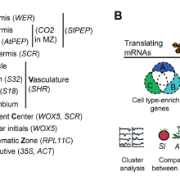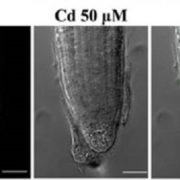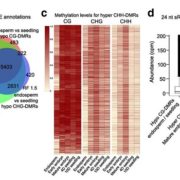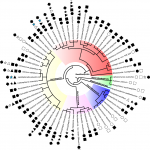DNA damage triggers reprogramming of differentiated cells into stem cells in Physcomitrella (Nature Plants) ($)
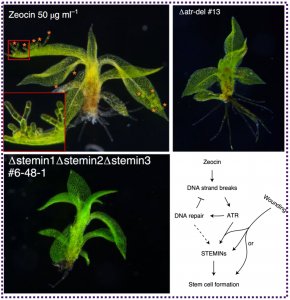 Wounding and other types of cellular damage, such as DNA damage-induced stem cell death, trigger cellular reprogramming to confer stem cell identity to damage-adjacent cells, thus establishing a new stem cell niche capable of repairing the injury. Studies in angiosperm models have identified the phytohormone auxin and the AP2/ERF transcription factor ERF115 as key players integrating damage responses through cellular reprogramming. A recent study by Gu et al. using the early diverging moss Physcomitrella patens (recently renamed Physcomitrium patens) showed that DNA damage caused by DNA-strand-breaks inducers (i.e. zeocin, bleomycin) causes leaf cell reprogramming to form chloronema apical stem cells, a cell type that’s in an earlier phase of the life cycle than leaf cells. Staining with fluorescent dyes revealed that the observed reprogramming occurs without cell death, while deletion mutant line analyses combined with zeocin treatment demonstrated that DNA-damage induced reprogramming depends on the expression of STEMIN1 (acting redundantly with STEMIN2/STEMIN3), an AP2/ERF transcription factor previously identified as a regulator of reprogramming in response to wounding. Further analyses showed that the expression of the key DNA damage signal transducer ATR (ATM and RAD3-related) is strongly increased after zeocin treatment and is also required for reprogramming, probably through DNA repair or by participating directly in the reprogramming process. This work calls attention to STEMINs as regulators of both wounding and DNA-damage induced reprogramming and opens a new niche for exploration: the relationship between DNA strand breaks and cellular reprogramming in the absence of cell death. (Summary by Jesus Leon @jesussaur) Nature Plants 10.1038/s41477-020-0745-9
Wounding and other types of cellular damage, such as DNA damage-induced stem cell death, trigger cellular reprogramming to confer stem cell identity to damage-adjacent cells, thus establishing a new stem cell niche capable of repairing the injury. Studies in angiosperm models have identified the phytohormone auxin and the AP2/ERF transcription factor ERF115 as key players integrating damage responses through cellular reprogramming. A recent study by Gu et al. using the early diverging moss Physcomitrella patens (recently renamed Physcomitrium patens) showed that DNA damage caused by DNA-strand-breaks inducers (i.e. zeocin, bleomycin) causes leaf cell reprogramming to form chloronema apical stem cells, a cell type that’s in an earlier phase of the life cycle than leaf cells. Staining with fluorescent dyes revealed that the observed reprogramming occurs without cell death, while deletion mutant line analyses combined with zeocin treatment demonstrated that DNA-damage induced reprogramming depends on the expression of STEMIN1 (acting redundantly with STEMIN2/STEMIN3), an AP2/ERF transcription factor previously identified as a regulator of reprogramming in response to wounding. Further analyses showed that the expression of the key DNA damage signal transducer ATR (ATM and RAD3-related) is strongly increased after zeocin treatment and is also required for reprogramming, probably through DNA repair or by participating directly in the reprogramming process. This work calls attention to STEMINs as regulators of both wounding and DNA-damage induced reprogramming and opens a new niche for exploration: the relationship between DNA strand breaks and cellular reprogramming in the absence of cell death. (Summary by Jesus Leon @jesussaur) Nature Plants 10.1038/s41477-020-0745-9




